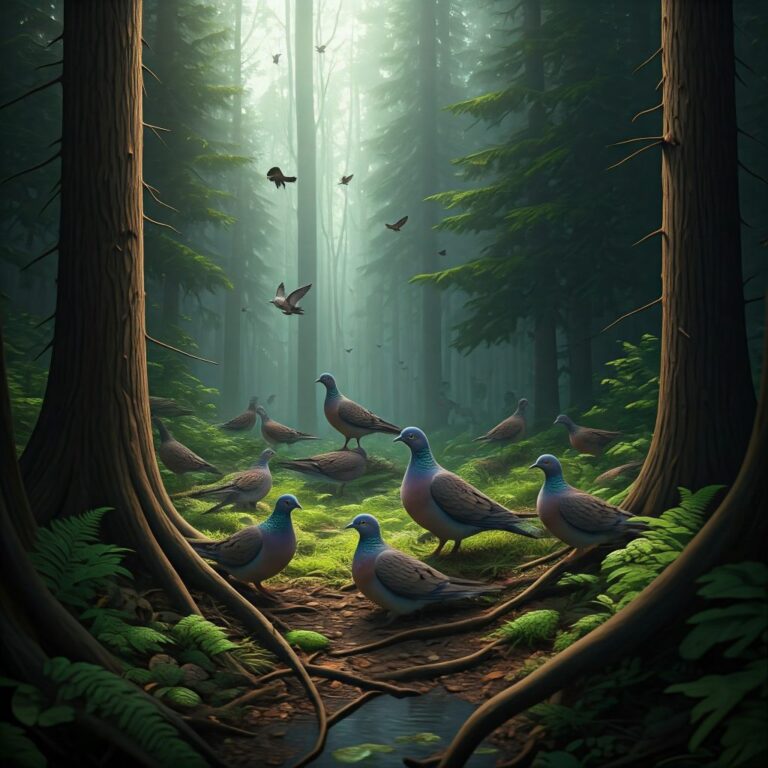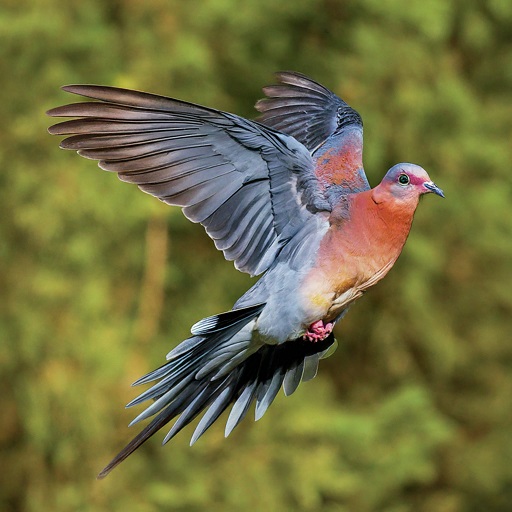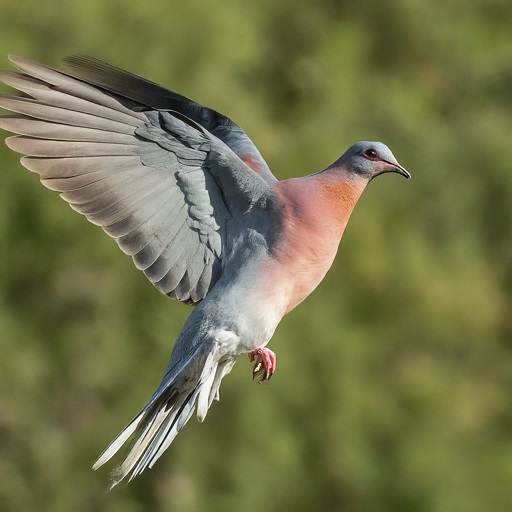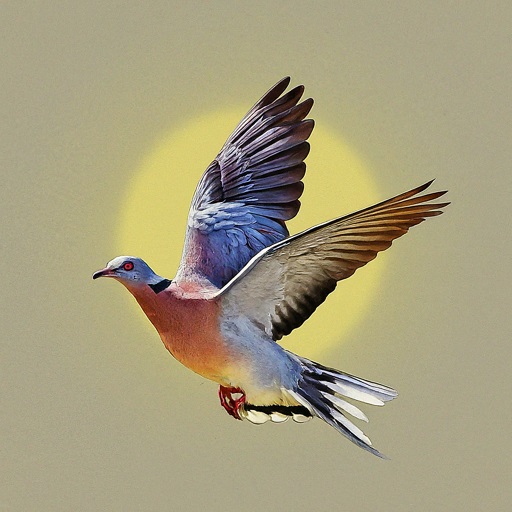Why Did The Passenger Pigeon Go Extinct?
If you are wondering why the passenger pigeon went extinct, this is the article for you. In this article, I will help you learn five major passenger pigeon extinction causes and the last known passenger pigeon named Martha. Passenger pigeons were once one of North America’s most abundant bird species, with flocks numbering in the billions. Today, you will delve into the factors that led to the Passenger pigeon’s extinction. Hence let’s start with knowing ‘why did the passenger pigeon go extinct.’
Why Did The Passenger Pigeon Go Extinct?
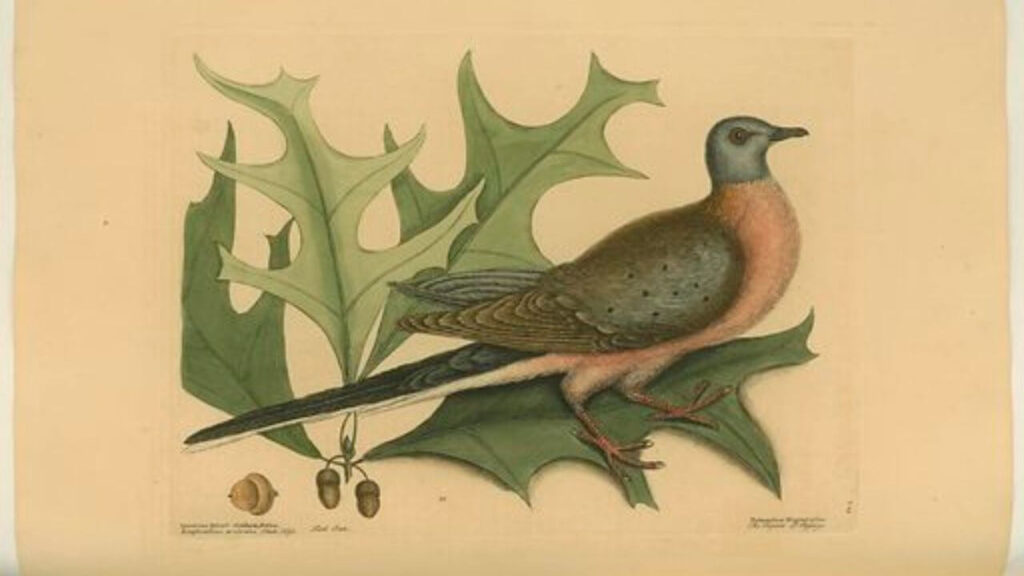
In the early 1800s, the passenger pigeon population started to experience a significant decline due to the impact of humans and ecological factors. According to research published by the University of California, the combination of massive-scale hunting & commercial exploitation was the primary driver behind this decline. During that period, humans were actively hunting passenger pigeons for their meat & feathers.
If we pay attention to the records from that time, we’ll find many people looking at these birds as an abundant & endless resource which further leads to uncontrolled hunting. A study conducted by the national society in 2020 stated that the passenger pigeon was one of the most abundant bird species in North America.
Unfortunately, this species made a tragic fate & the last known passenger pigeon, Martha, died in captivity in the Cincinnati Zoo in September 1914. undoubtedly the passenger pigeons were truly remarkable bird species. Also, if you look at the historical records, you will find that their population was so fast that a single flock could darken the sky for days.
T, the Cornell Lab of Ornithology study emphasizes that passenger pigeons used to occupy an enormous range across North America, further stretching from eastern Canada to the Gulf of Mexico & from the Atlantic coast to the great plains. I have mentioned five reasons below to help you gain more valuable insight into the passenger pigeon extinction causes.
5 Passenger Pigeon Extinction Cause
The Role of Human Hunting & Commercial Exploitation
As I told you earlier, the hunting of passenger pigeons tends to be the most prevalent activity not only for sustaining but also for sports. While doing my research, I learned about prominent oncologist John James who described the hunting of these birds in his writing detailing how people were continuously using large nets & other methods to catch thousands of passenger pigeons in a single day.
The demand for passenger pigeon meat was considered cheap in that era. Also, their meat was considered an easily accessible source of protein which further led to unsustainable levels of hunting. Also, I got to know about a study by the Smith Soniya institution stating that the passenger pigeon meat market at that time was a very lucrative business who not only used to create meat but also passenger pigeon feathers for use in fashionable clothing as well as accessories, contributing to the species’ decline. Undoubtedly, the widespread killings of passenger pigeons disrupted their natural breeding patterns & further exacerbated the population decline.
Habitat Destruction & Fragmentation
Another significant cause of passenger pigeon Extinction could be due to habitat destruction & fragmentation. Looking at the 19th century, you will find that rapid urbanization & deforestation across North America also resulted in a sudden decline in the passenger pigeon population. As a result of continuous urbanization & deforestation, the passenger pigeon’s once vast & continuous forest habitat was fragmented into isolated pockets.
Research that the United States conducted for the service found that habitat loss significantly impacted the passenger pigeon’s ability to find suitable nesting & roosting sites, leading to decreased reproductive success. In addition to this decline, forests also reduced the availability of passenger pigeon-preferred food sources like acorns & beechnuts, impacting their reproductive success & sustainability in the ecosystem. According to the ecological society of America, any sudden changes in food availability also contribute to a decrease in their overall population.
Climate Change & Altered Migration Patterns
According to a national oceanic & atmospheric Administration study, any shift in weather patterns & temperature changes could have disrupted the passenger pigeon migration route & bleeding behavior. You should know that climatic changes also played a huge role in the Extinction of a passenger pigeon we might not know right now.
Before their Extinction, passenger pigeons were known for their large-scale seasonal migrations in search of food and suitable nesting sites. As the weather & temperature pattern started to change, passenger pigeons’ traditional migration path became less predictable, affecting the ability to find sufficient resources during the critical times of the year. Maybe this was also why passenger pigeons went extinct from this world, leaving a void in our diversity.
Disease & Pathogens
Additional factors that might contribute to the passenger pigeon decline are said to be diseases & pathogens. While doing my research, I learned about a study published in the Journal of wildlife diseases stating that high population density in massive flocks also created ideal conditions for the transmission & spread of avi & diseases. With passenger pigeons in such proximity to each other, the disease could have rapidly infected & devastated the entire flock. If this were the case, the responsible Culprits would become hard for us to track down without solid evidence or source.
Lack of Conservation Efforts
Unfortunately, 19th-century society indeed lacked the awareness & understanding of the importance of conservation as we do today. In that era, no regulations or laws were in place to protect these magnificent passenger pigeons from overhunting or habitat destruction. Despite The warning of concerned conservationists & naturalists, the passenger pigeon’s decline continued unabated.
The Last Flight: Final Days of the Passenger Pigeon

I don’t know how to tell you, but I am sad to write the tragic end of the passenger pigeon, which came with the death of Martha (female), the last known surviving individual of this species. As mentioned previously, her passing marks the Extinction of a once-thriving species that once shaped the ecosystem of North America.
You should note that the passenger pigeon’s story serves as a pregnant reminder of the devastating consequences of our actions in this natural world. A research paper by the World Wildlife Fund states that the Extinction of a passenger pigeon was a turning point in our conservation history which further led to increased awareness and the establishment of the first wildlife protection laws.
We must also learn from our past mistakes & prevent any future extinction. Today, many conservation efforts focus on understanding each species’ ecological roles and the impact of human activities on the species & environment. Also, many organizations like the Audubon Society & the national society continue to work towards protecting endangered species and their habitat.
Conclusion
I hope you now know why the passenger pigeon went extinct. The eA passenger pigeon’s extinction resulted from a combination of factors primarily driven by human activities. We can say that relentless hunting, commercial exploitation, habitat destruction, climate change, and diseases all played their part in the downfall of these once-abundant species.
I have given my best to shed some light on the tragic history of passenger pigeons & highlighted the importance of preserving biodiversity while implementing effective conservation measures. I hope you learned some lessons from the Extinction of the passenger pigeon, which further reminds us of life on our planet.
If you find this article discussing five passenger pigeon extinction causes, consider sharing it. Your share will help many people learn about the causes of passenger pigeon extinction cause or ‘why the passenger pigeon go extinct.’ Do check my other helpful guide on passenger pigeons shared on this website. See you in the next post, till then, take care & goodbye.

